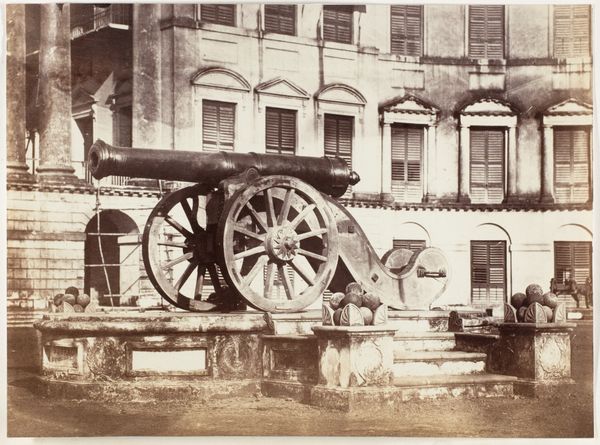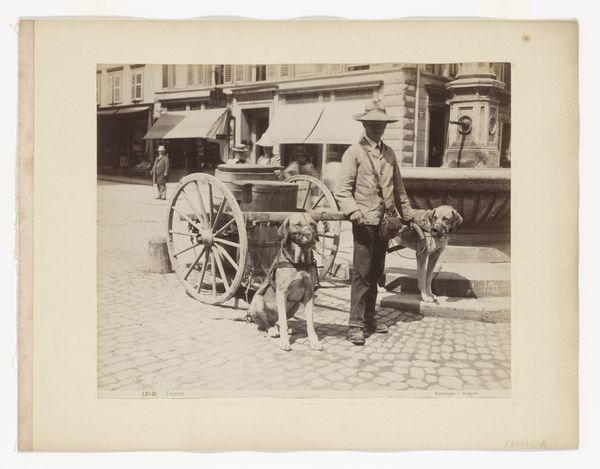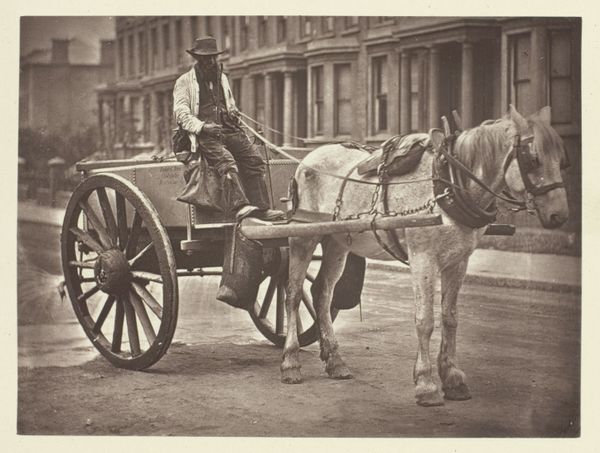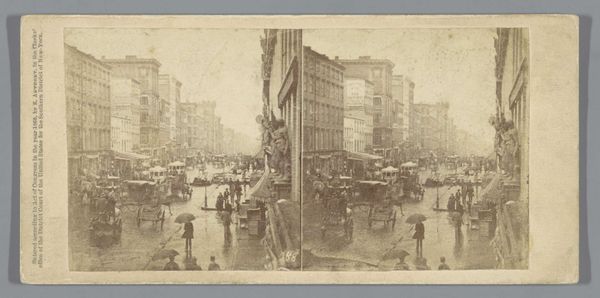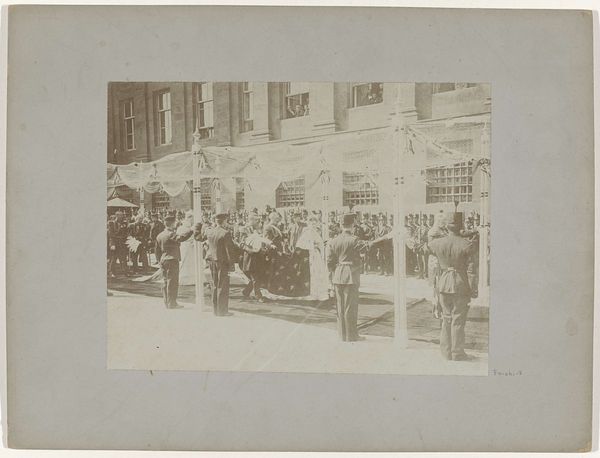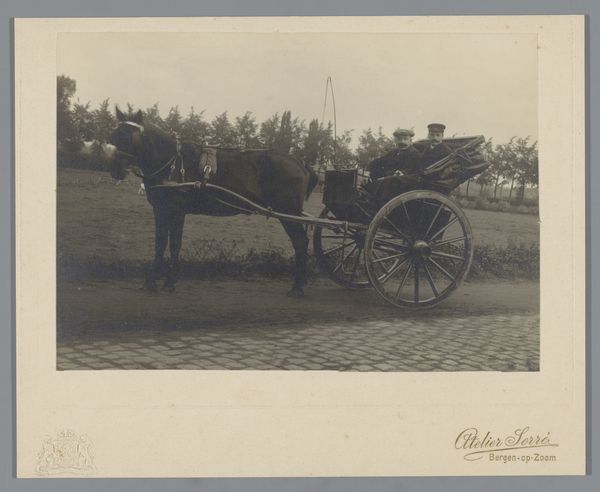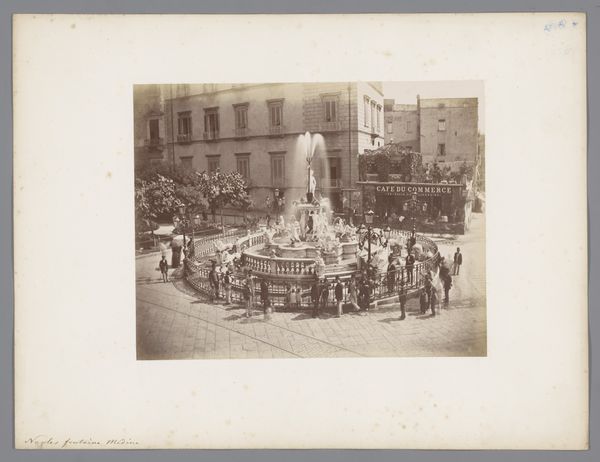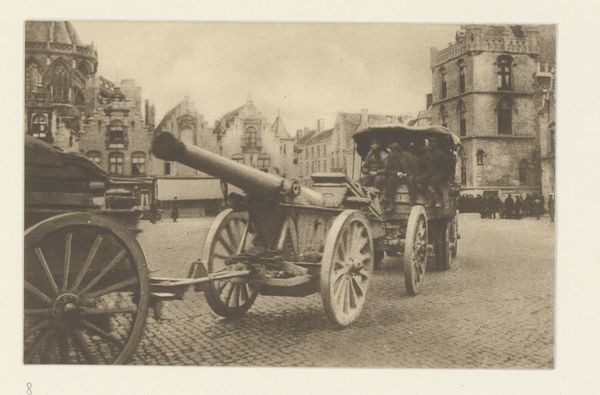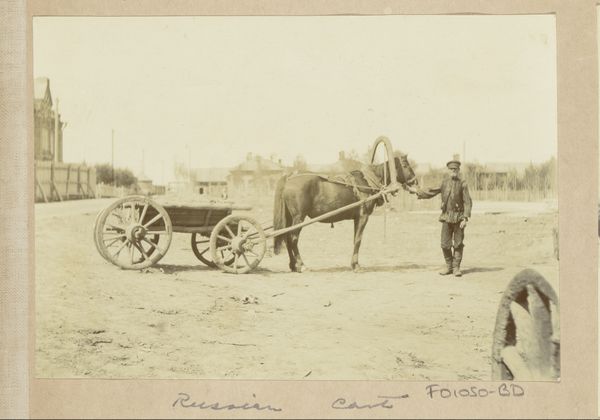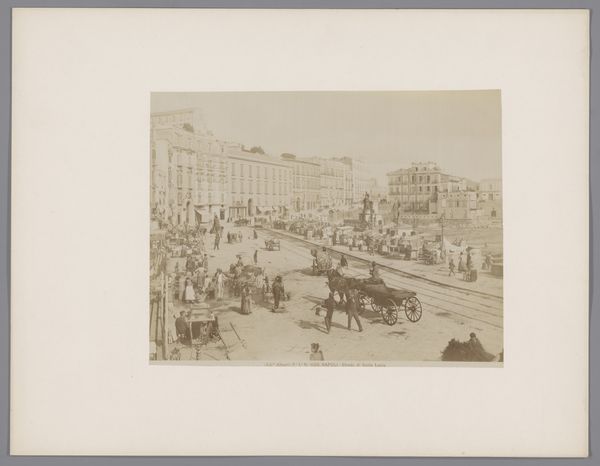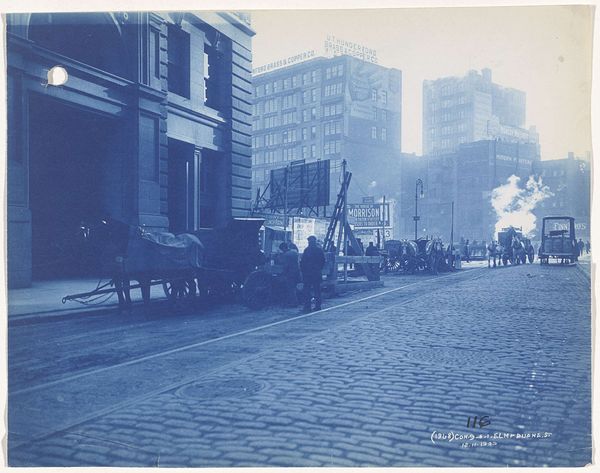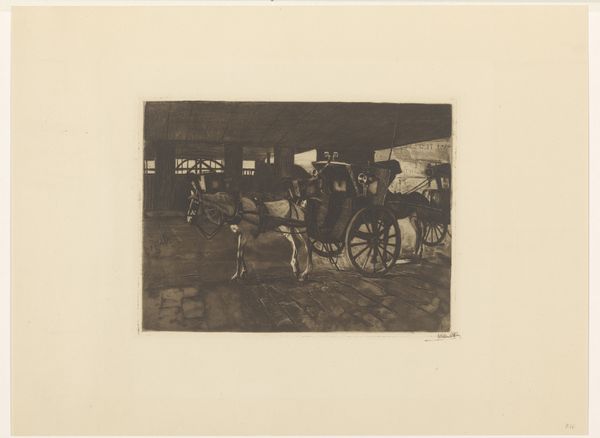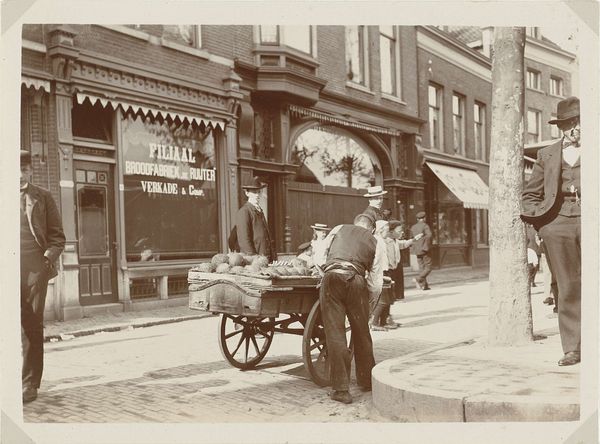
print, photography, gelatin-silver-print
# print
#
street-photography
#
photography
#
orientalism
#
gelatin-silver-print
#
cityscape
#
realism
Dimensions: height 226 mm, width 242 mm
Copyright: Rijks Museum: Open Domain
Curator: What a stunning gelatin-silver print. Here, we have Josep Maria Sert's "Street Scene," dating circa 1920-1935. Editor: It's stark, almost brutal, isn't it? The high contrast really emphasizes the grime and the weight of things, both literally and figuratively. Curator: Sert captures the essence of early 20th-century urban life so vividly. It makes me consider how rapid urbanization transformed cityscapes and impacted everyday existence for people. The visible markers of labor really stand out, too. Editor: Exactly. You can almost feel the labor emanating from those draft animals tethered to the heavy carts. It highlights class disparities. You see the clotheslines overhead, an intimate peek into domestic lives juxtaposed against the grueling, public-facing work happening below. Whose city is it, really? Curator: Sert clearly draws upon elements of realism in portraying this street corner. The mundane and everyday is elevated. I find myself thinking about the development of street photography, especially, as an attempt to record urban development, and even perhaps guide it. Editor: Yes, and there’s something deeply humanizing, if also a bit despairing, in this gaze. These cityscapes always bring forward conversations about class and labor inequities in expanding industrial centers. This image prompts reflection on labor rights, and living standards as they existed a century ago. Curator: Absolutely, these sorts of images influenced socio-political discourse at the time and continue to encourage conversation about the role of photography in documenting these issues and influencing policy. The camera doesn’t lie. Editor: True, or at least, it's harder to dismiss. What remains compelling, however, is how images like this speak to an unresolved story of marginalization and urban precarity. Thanks for sharing insights. Curator: And thank you. It’s a photograph that offers continuous room to explore society.
Comments
rijksmuseum about 2 years ago
⋮
José Maria Sert is known primarily for the murals that he painted in buildings, including the Waldorf-Astoria Hotel in New York. He regularly took photographs as preparatory studies, or aides-memoires. While Sert’s photographs were only a means to an end, now they are also appreciated for their beauty. He used a grid method to transfer the images to his much larger murals.
Join the conversation
Join millions of artists and users on Artera today and experience the ultimate creative platform.
